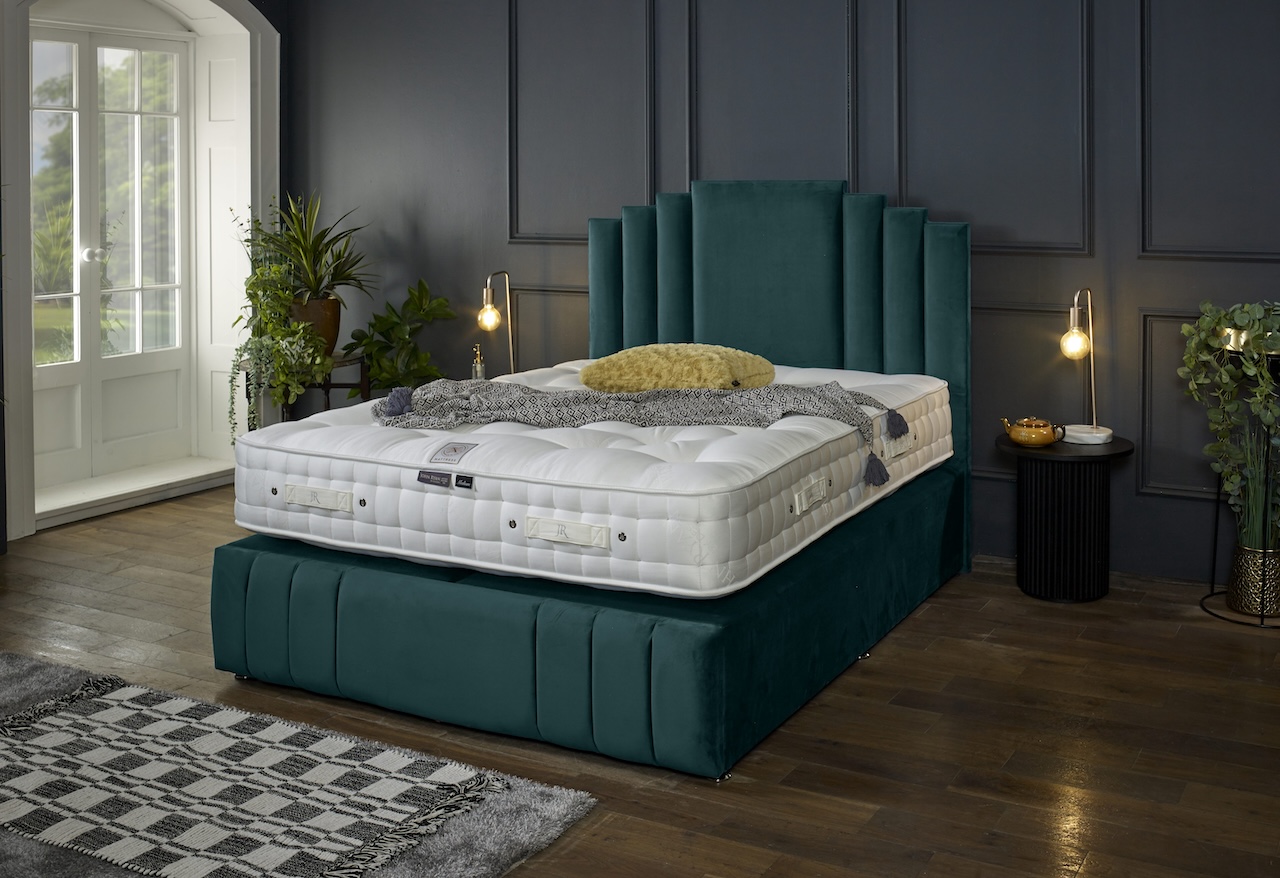Sleep & Well Being, Mattress Science
February 2025How to Sleep with Restless Leg Syndrome (RLS)
Imagine getting into bed when you’re tired, pulling up the covers, and ready to fall asleep, when all of a sudden, your legs start to twitch, fidget and move erratically. This is what restless leg syndrome (RLS) sufferers experience nightly while trying to fall asleep. This guide will help you identify if you have RLS and what you can do to get a better night’s rest. Although RLS can be an absolute nightmare, tweaks and sleep suggestions can help make your sleep patterns more refreshing and regular.
What is Restless Leg Syndrome (RLS)?
Restless Legs Syndrome (RLS), also known as Willis-Ekbom Disease, is a neurological disorder characterized by an uncontrollable urge to move the legs, often accompanied by uncomfortable sensations. These sensations are typically described as aching, tingling, or crawling and usually occur during periods of inactivity, such as sitting or lying down, especially in the evening or at night. Movement often provides temporary relief.
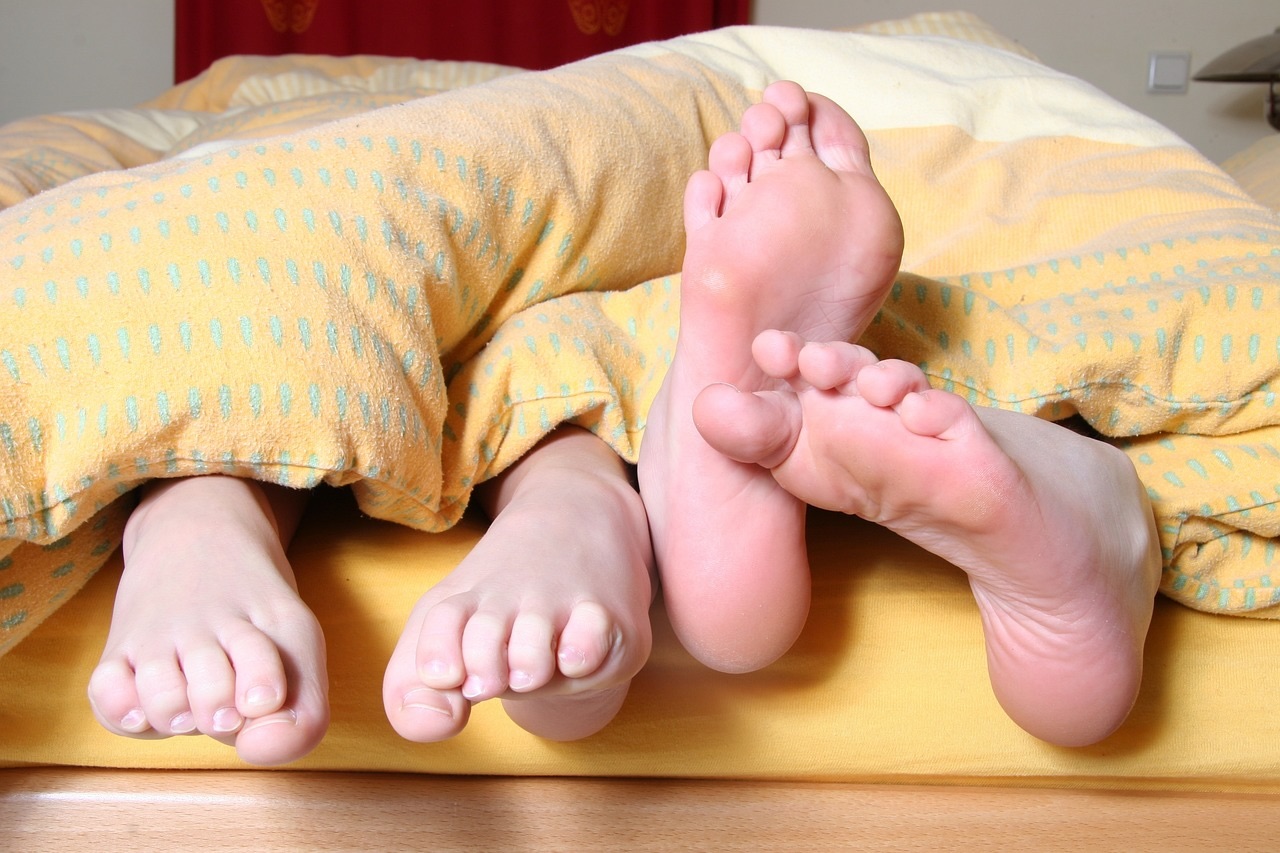
Symptoms of Restless Leg Syndrome
- Urge to Move the Legs: An overwhelming need to move the legs, often to alleviate discomfort.
- Unpleasant Sensations: Feelings such as aching, tingling, or crawling in the legs.
- Rest-Induced Symptoms: Symptoms typically arise during periods of inactivity.
- Evening or Nighttime Worsening: Symptoms often intensify in the evening or at night.
- Temporary Relief with Movement: Walking or stretching can temporarily alleviate symptoms.
What Causes RLS?
The exact cause of restless leg syndrome/RLS is often unknown; however, several factors are associated with the development of RLS:
- Genetic Predisposition: RLS can run in families, suggesting a hereditary component.
- Iron Deficiency: Low iron levels in the brain have been linked to RLS.
- Chronic Diseases: Conditions such as Parkinson’s, diabetes, and peripheral neuropathy are associated with RLS.
- Medications: Certain drugs, including some antihistamines, antidepressants, and antipsychotics, may trigger or worsen symptoms.
- Pregnancy: Some women experience RLS during pregnancy, especially in the third trimester, but symptoms often disappear after delivery.
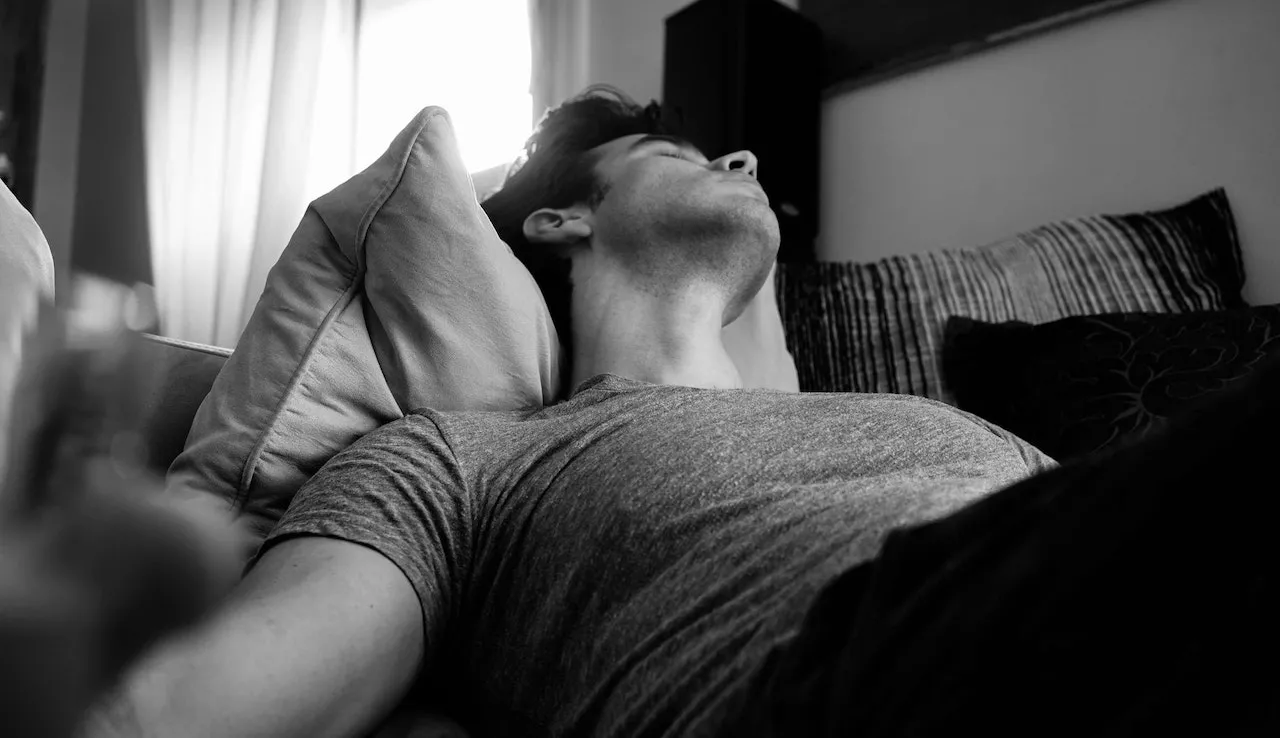
RLS (Restless Leg Syndrome) can keep you awake at night because it causes an uncontrollable urge to move your legs, often accompanied by uncomfortable sensations like tingling, aching, or crawling.
These symptoms worsen during rest periods, especially in the evening or at night, making it difficult to relax and fall asleep. Movement provides temporary relief, but the discomfort often returns once still.
This cycle of restlessness can lead to sleep deprivation, fatigue, and difficulty maintaining a healthy sleep schedule.

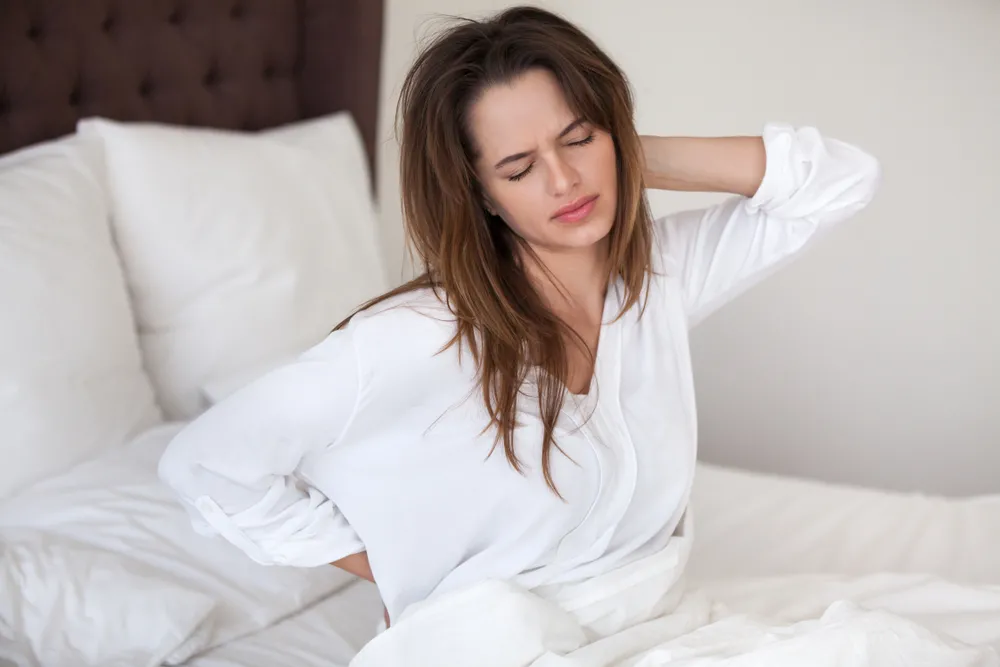
How is RLS Diagnosed?
Unfortunately, there is no specific test for RLS; diagnosis is primarily based on clinical criteria. Of course, for those who are struggling to sleep with restless leg syndrome, it can be obvious when you’re suffering from it. If unsure, though, there are a few characteristics of RLS if you’re unsure. People with RLS often describe some or all of the following issues:
- Uncomfortable sensations usually accompany an overwhelming urge to move the legs.
- RLS Symptoms begin or worsen during periods of rest or inactivity.
- Symptoms are partially or relieved by movement.
- RLS is worse in the evening or at night.
- Another medical or behavioural condition does not solely account for symptoms.
How to sleep better with RLS
Restless leg syndrome can be a frustrating health condition to manage, especially as it seems to flair up just as you relax in bed. There are several recommended treatments not to cure but to help minimize disruption from restless legs during the night. Let’s look at each of these suggestions to see if they will help you sleep better and reduce the impact of RLS on your sleep hygiene.
1. Establish a Sleep-Friendly Routine
A consistent sleep routine can help regulate your body’s internal clock and make it easier to fall asleep despite RLS symptoms. We recommend sleep routines for all sleepers as this is one of the first issues we see with our customers. Most troubled sleepers have very irregular sleep habits, patterns, or nighttime routines. This upsets our internal body clock and can make people without RLS feel fidgety in bed.
i) Set a Sleep Schedule
Go to bed and wake up at the same time every day, even on weekends. This is crucial to get your circadian rhythms back on track and give yourself the best chance of ‘sleep success‘ at night. Just like a morning alarm clock, a nighttime sleep clock can help you get into sleep routines and achieve the sometimes elusive 8 hours of sleep every night!
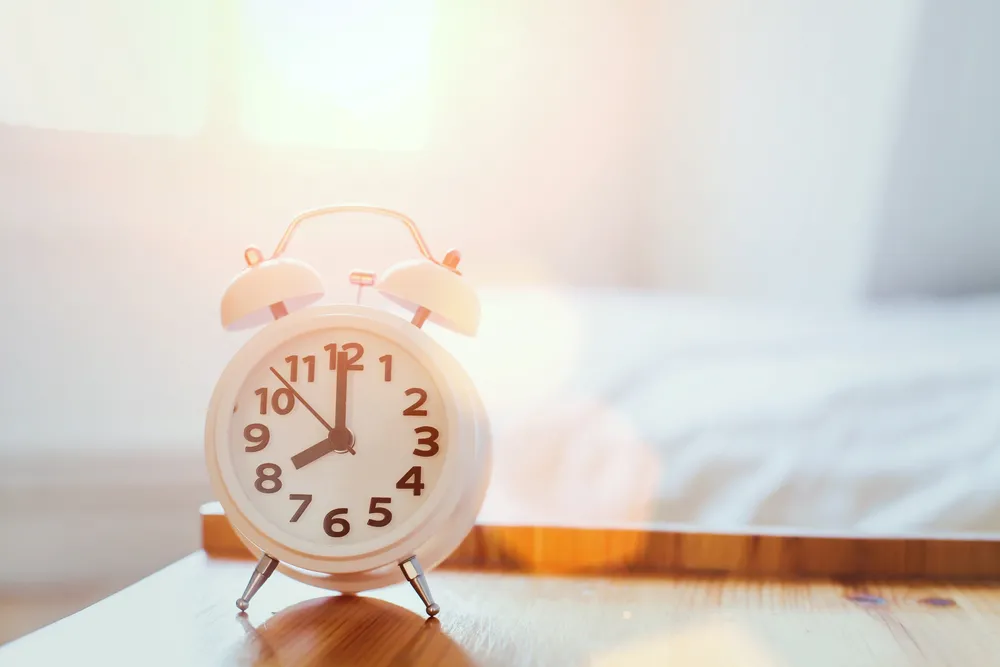
ii) Create a Relaxing Bedtime Routine
Winding down with calming activities like reading, meditation, or a warm bath can help prepare you for sleep. In particular, hot baths or showers cause your blood vessels to dilate, allowing more blood to flow to your skin’s surface. This then releases heat and helps you cool down while also using energy, which can make you feel tired. Even aromatherapy has been proven to help people who struggle to sleep each night and should be considered.
iii) Limit Screen Time
Technology has infiltrated our lives at a record pace, and whilst it’s a fantastic tool to help you get work done, lists created or find the answers to life’s problems in the daytime, it is not that conducive to sleep! Screens beg for your attention; their bright blue lights stimulate our brains and keep our attention on them. For quality sleep, this is an absolute no-no! Avoid screens at least one hour before bed, as blue light can disrupt melatonin production and consider leaving your phone out of the bedroom. You can always opt for an old-school alarm clock instead!

2. Manage Lifestyle Factors
Did you know that there are factors that you may not have thought of that can impact your sleep even without RLS? Whether it’s eating late, that post-dinner coffee or late-night takeaways, there are everyday choices that at the time feel like they will make you feel better, but when it comes to bedtime, they play havoc with your sleep cycle.
Certain lifestyle adjustments can reduce the severity of RLS symptoms and improve overall sleep quality.
- Exercise Regularly: Engage in moderate exercise (e.g., walking, swimming) but avoid vigorous workouts close to bedtime. A walk after dinner is a prime example of a healthy habit that can produce a feeling of a ‘warm, tired buzz’ in the evening.
- Avoid Stimulants: Reduce or eliminate caffeine, nicotine, and alcohol, especially in the evening after 5 pm.
- Maintain a Healthy Diet: Ensure you consume a balanced diet rich in iron, magnesium, and folate, as deficiencies in these nutrients can exacerbate RLS.
3. Optimize Your Sleep Environment
Creating a comfortable and supportive sleep setting can ease discomfort and encourage better rest with RLS, but sometimes, the culprit of an uncomfortable night’s sleep is lying just beneath you: your mattress!
One of the biggest niggles for sleepers with RLS can be that, without realising it, you’re trying to get to sleep on an uncomfortable or unsuitable mattress and bedding combination.
Most people will have had their mattress for anywhere between 5-20 years; during that time, your body weight and requirements can change. For example, did you know that each spring tension in a mattress is made for a specific weight range? We bet the salesperson didn’t explain or even venture into this vital fact find the last time you bought a mattress.

A) Choose the right mattress
When selecting the best mattress for Restless Leg Syndrome (RLS), finding the perfect balance of support and comfort is crucial to minimize discomfort and improve sleep quality. The first and most important step is choosing the correct spring tension based on your body weight. This ensures your spine stays properly aligned, preventing additional pressure that could worsen nighttime restlessness.
Choosing pocket springs over open coil mattresses reduces transference as each spring works and reacts independently. A must-have if you suffer from RLS to stop the entire mattress from shaking when you need to move or wake your partner.
Once you have the right level of support, the next consideration is the comfort layer. Opting for a medium or soft comfort layer is essential, as it provides a more forgiving surface that cushions your limbs, reducing pressure points and preventing unnecessary irritation. A firmer mattress can create excess tension in your legs, increasing the urge to move and making it harder to relax.
Materials such as high-quality natural fibres like British wool, which is breathable, or responsive natural latex, which is pressure-relieving. You want high-wicking and breathable fibres that can gently cradle your body, promoting better circulation and minimizing disruptions.
Breathability is key with mattresses for RLS. Good airflow and moisture-wicking properties help regulate temperature, preventing overheating, which can further exacerbate RLS symptoms.
By selecting a mattress with the correct spring tension and a plush, contouring comfort layer, you can create an optimal sleep environment that supports your body while reducing the triggers that keep you awake at night.
B) Keep your Bedroom Cool
The optimal bedroom temperature for a restful and restorative night’s sleep sits between 16-18°C (60-65°F). This cool yet comfortable range helps regulate your body temperature, preventing overheating and night sweats, which can lead to restless tossing and turning.
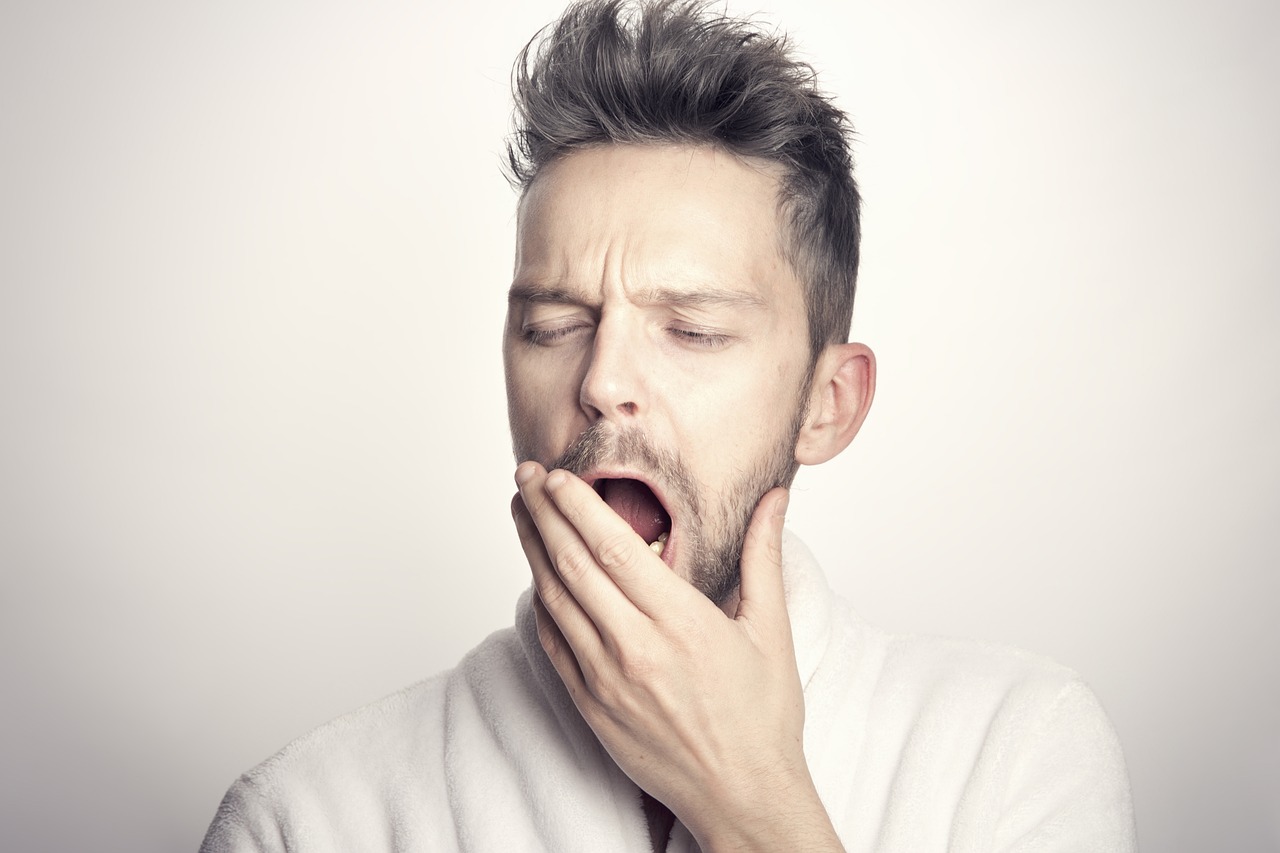
A bedroom that’s too warm can disrupt the natural sleep cycle, causing frequent awakenings and reducing the time spent in deep, restorative sleep. Conversely, if it’s too cold, your body has to work harder to stay warm, leading to muscle tension and discomfort.
Consider using breathable natural fibre bedding like wool, cotton, or linen to achieve the perfect sleep environment. These materials help wick away moisture while allowing airflow. A well-ventilated room and temperature-regulating mattress materials such as latex or natural wool can enhance comfort by maintaining a stable sleep climate.
4. Try Home Remedies and Natural Treatments
Simple home remedies can significantly relieve restless legs by promoting relaxation, improving circulation, and reducing discomfort. While not a cure, these natural approaches can help manage symptoms, making falling and staying asleep easier. There’s plenty of anecdotal evidence from people with RLS that these remedies can help minimise the impact of twitching legs at night time.
i) Warm or Cold Compresses
Applying warm or cold packs to your legs can help soothe the uncomfortable sensations associated with Restless Leg Syndrome (RLS). Heat therapy, such as a warm bath, heating pad, or warm towel, helps relax muscles, increase blood flow, and ease tension. Cold therapy, like an ice pack or cool compress, can numb discomfort and reduce inflammation, particularly if RLS symptoms worsen with swelling or heat. Some individuals find alternating between hot and cold treatments most effective (Allen et al., 2011, Sleep Medicine Reviews).
ii) Leg Massage
Gently massaging your legs, particularly before bed, can stimulate circulation, relax tight muscles, and reduce nerve sensitivity—all of which help ease RLS symptoms. Using firm but gentle pressure, focus on the calves, thighs, and feet, as these areas are commonly affected. Adding essential oils like lavender, peppermint, or magnesium oil may enhance the benefits by promoting relaxation and reducing muscle spasms (Thorpy & Ehrenberg, 2019, Handbook of Clinical Neurology).
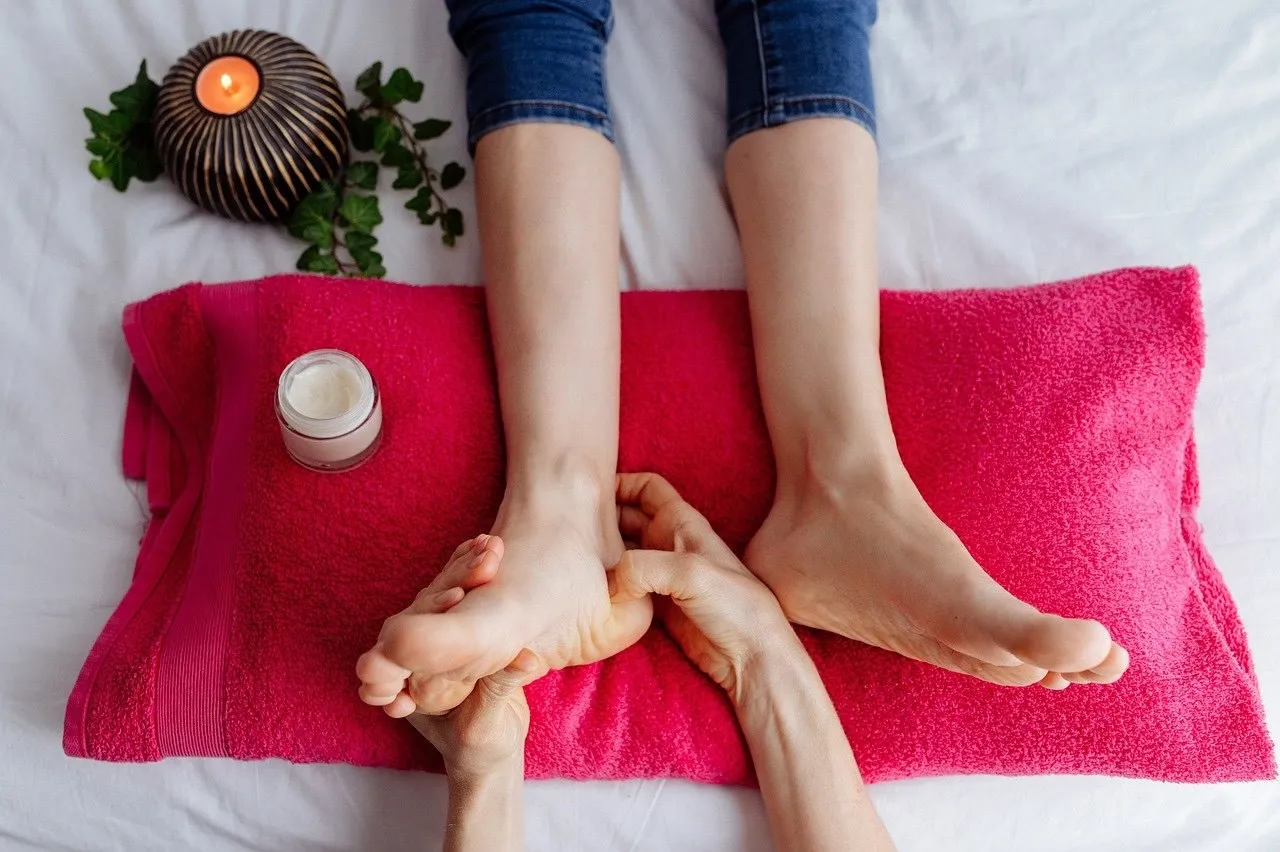
iii) Stretching Exercises
Engaging in gentle, targeted stretching before bedtime can relieve muscle tension and reduce the urge to move your legs. Focus on the calves, hamstrings, and quadriceps, as tightness in these areas can exacerbate symptoms. Simple stretches such as toe touches, standing calf stretches, and yoga poses like downward dog or seated forward bends can help loosen muscles and improve circulation.
Studies suggest that low-impact activities like yoga and Pilates can reduce RLS severity by increasing dopamine levels and enhancing relaxation (Rajaram et al., 2018, Journal of Bodywork & Movement Therapies).
5. Consider Medical Interventions
If your RLS symptoms are severe or persistent, you should always consult a GP or healthcare specialist to diagnose and then recommend treatments. For sufferers of RLS both iron supplements and other dopamine agonists, anticonvulsants or muscle relants can help. However, you do need to seek specialist qualified treatment for these.
6. Mind-Body Techniques
Managing stress and calming the mind are essential when it comes to reducing Restless Leg Syndrome (RLS) symptoms and promoting deep, restorative sleep. Stress and anxiety can intensify RLS episodes, making it even harder to settle down at night. By incorporating proven relaxation techniques, you can help soothe the nervous system, regulate dopamine levels, and create the ideal conditions for a peaceful night’s rest.
A) Cognitive Behavioral Therapy (CBT)
Cognitive Behavioral Therapy (CBT) is a highly effective method for managing stress, anxiety, and sleep disorders—factors that can all worsen RLS symptoms. This structured approach helps identify and change negative thought patterns that lead to racing thoughts, sleep disturbances, and heightened stress levels, all of which can make RLS feel more intense at night.
CBT also promotes better sleep hygiene, focusing on creating a calming bedtime routine, avoiding stimulants (like caffeine or screens), and training your mind to associate the bedroom with rest rather than frustration. Research suggests that CBT for insomnia (CBT-I) can significantly improve sleep quality for individuals with RLS by reducing the mental strain that comes with restless nights (Thorpy & Ehrenberg, 2019, Handbook of Clinical Neurology).

B) Meditation and Deep Breathing: Calming the Nervous System
When your nervous system is overstimulated, RLS symptoms can become more pronounced. Mindfulness meditation, guided imagery, and deep breathing exercises can help activate the parasympathetic nervous system, which is responsible for relaxation and restoration.
Simple deep-breathing techniques, such as 4-7-8 breathing (inhale for 4 seconds, hold for 7 seconds, exhale for 8 seconds), can lower heart rate, reduce cortisol levels, and ease muscle tension in the legs. Guided meditation apps, gentle background sounds, or sleep hypnosis techniques can also help shift the brain into a state of deep relaxation, reducing the urge to move your legs. Studies show that meditation can significantly decrease stress-induced RLS episodes and improve sleep continuity (Rajaram et al., 2018, Journal of Bodywork & Movement Therapies).
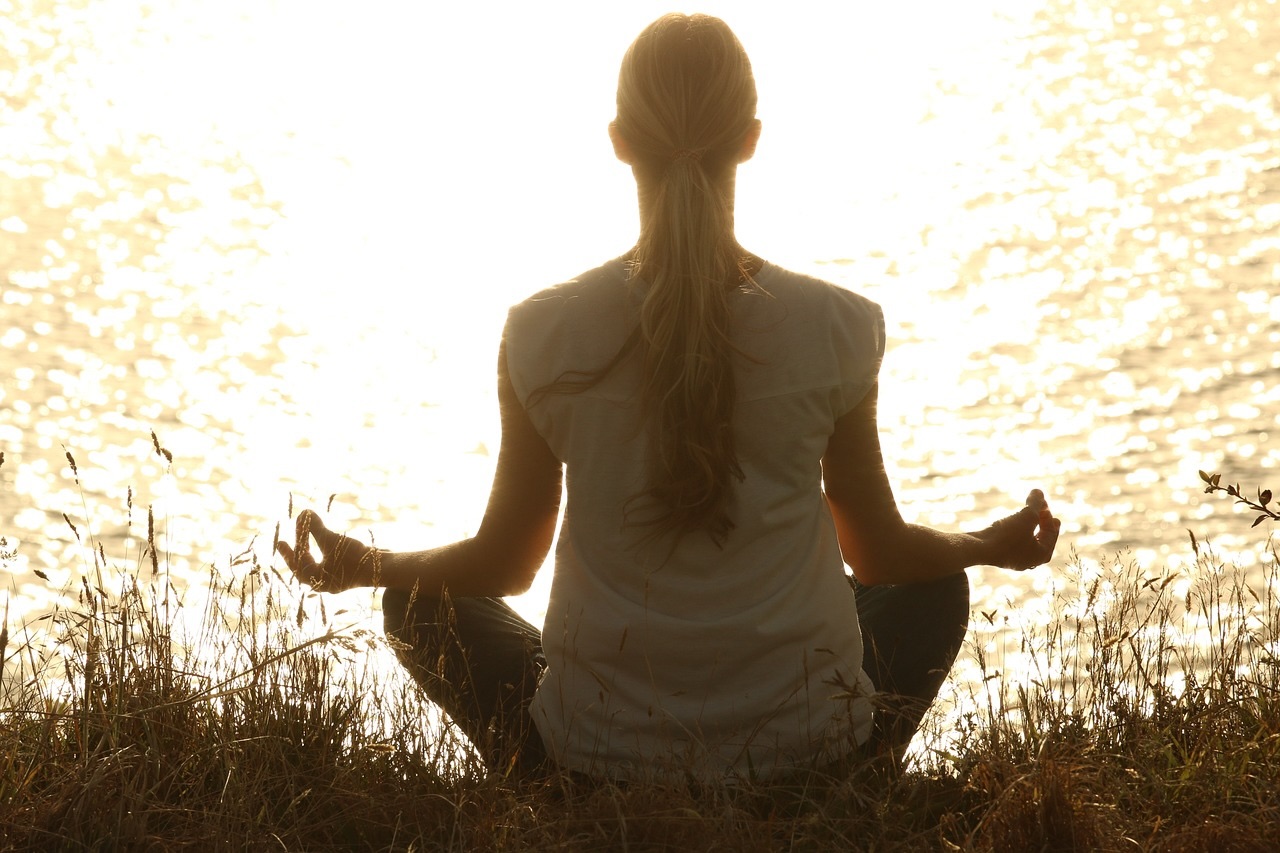
C) Progressive Muscle Relaxation: Easing Physical Tension
Progressive Muscle Relaxation (PMR) is a powerful technique that systematically tenses and then relaxes different muscle groups, helping to reduce physical and mental stress. This method is particularly beneficial for those with RLS, as it focuses on releasing built-up muscle tension, which can trigger restless sensations.
A simple PMR exercise before bed involves:
- Start at your toes, tensing the muscles for 5-10 seconds, then slowly releasing.
- Move up through your legs, thighs, abdomen, arms, shoulders, and neck, repeating the process.
- Focus on the sensation of relaxation spreading through your body, easing any lingering tension.
Regular PMR practice has been shown to lower muscle hyperactivity, improve circulation, and encourage the deep relaxation necessary for restful sleep. Given the fact it requires no equipment and can be done in the bedroom before bed its worth a try is you’re struggling to sleep with RLS.
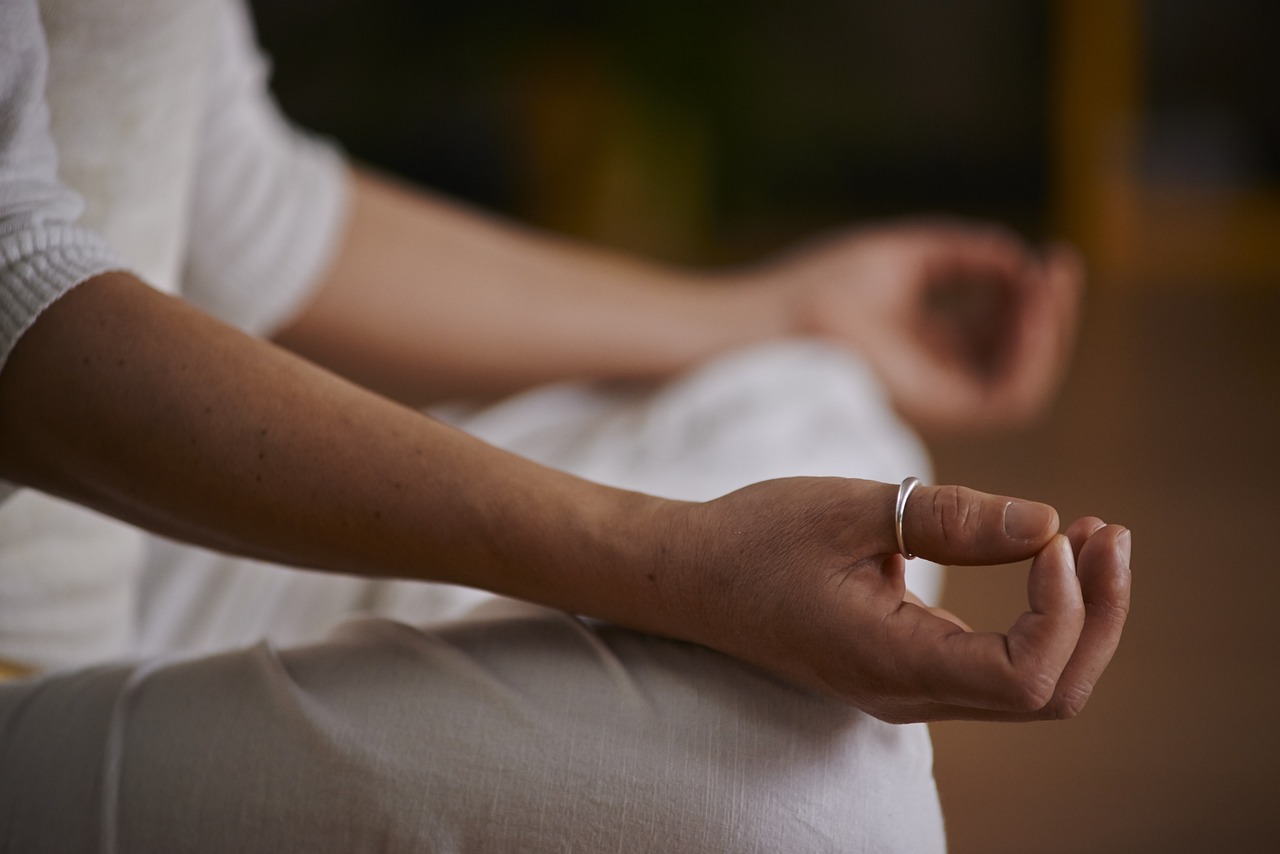
7. Track and Identify Triggers
Keeping a journal can help you identify patterns and triggers for your RLS symptoms. This can be important when discussing restless leg syndrome with your GP or working out if certain events, day time activities or stressors worsen to ‘trigger’ the symptoms of RLS. By understanding your triggers you can then adapt workarounds to help reduce or avoid them before bedtime.
- Record Your Symptoms: Note when symptoms occur, their intensity, and any associated activities.
- Diet and Lifestyle Log: Track your food intake, exercise, and sleep habits to identify potential triggers.
Summary
Managing Restless Leg Syndrome requires a multi-faceted approach that combines lifestyle changes, home remedies, and medical support. You can alleviate symptoms and improve your sleep quality by making consistent adjustments and working with your healthcare provider. Remember, what works best may vary from person to person, so be patient and persistent in finding the right strategies for you.
If you have any questions about our products, please don’t hesitate to contact us. Our friendly team of experts will be more than happy to listen to your requirements and help you choose the mattress that will work best for you.

Dreaming of the perfect nights sleep?
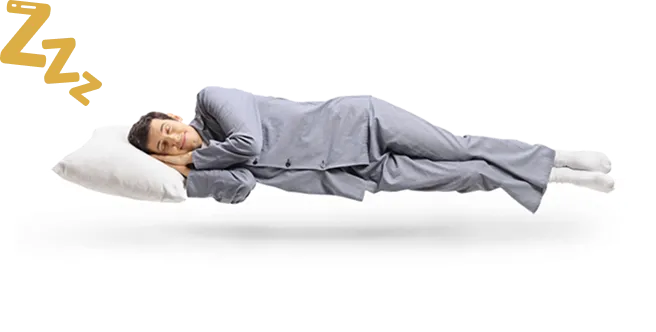
Ask us a question
There are over 6000 questions and answers submitted by you on all questions about mattresses and bed problems. Enter a keyword such as Vi Spring, John Lewis beds, bad back or Memory Foam and see if your question has already been answered.
If you can’t find an answer in knowledge hub, ask a new question. We aim to respond to all questions within one working day.
Newsletter
Enter your email to join our newsletter. We’ll send you occasional news and mattress expertise.

